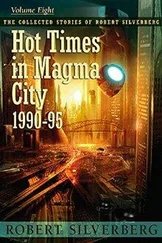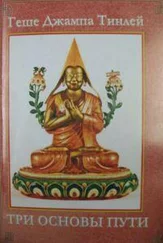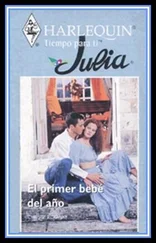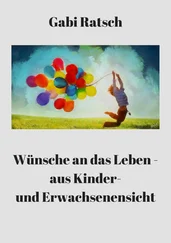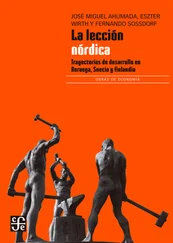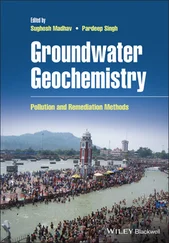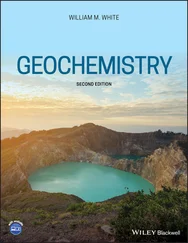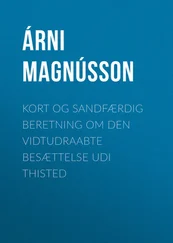Magma Redox Geochemistry
Здесь есть возможность читать онлайн «Magma Redox Geochemistry» — ознакомительный отрывок электронной книги совершенно бесплатно, а после прочтения отрывка купить полную версию. В некоторых случаях можно слушать аудио, скачать через торрент в формате fb2 и присутствует краткое содержание. Жанр: unrecognised, на английском языке. Описание произведения, (предисловие) а так же отзывы посетителей доступны на портале библиотеки ЛибКат.
- Название:Magma Redox Geochemistry
- Автор:
- Жанр:
- Год:неизвестен
- ISBN:нет данных
- Рейтинг книги:5 / 5. Голосов: 1
-
Избранное:Добавить в избранное
- Отзывы:
-
Ваша оценка:
- 100
- 1
- 2
- 3
- 4
- 5
Magma Redox Geochemistry: краткое содержание, описание и аннотация
Предлагаем к чтению аннотацию, описание, краткое содержание или предисловие (зависит от того, что написал сам автор книги «Magma Redox Geochemistry»). Если вы не нашли необходимую информацию о книге — напишите в комментариях, мы постараемся отыскать её.
Magma Redox Geochemistry
Volume highlights include: Magma Redox Geochemistry
The American Geophysical Union promotes discovery in Earth and space science for the benefit of humanity. Its publications disseminate scientific knowledge and provide resources for researchers, students, and professionals.
Magma Redox Geochemistry — читать онлайн ознакомительный отрывок
Ниже представлен текст книги, разбитый по страницам. Система сохранения места последней прочитанной страницы, позволяет с удобством читать онлайн бесплатно книгу «Magma Redox Geochemistry», без необходимости каждый раз заново искать на чём Вы остановились. Поставьте закладку, и сможете в любой момент перейти на страницу, на которой закончили чтение.
Интервал:
Закладка:
A subset of the data we compiled for this review reports glass Fe 3+/∑Fe ratios. Unlike mineral equilibria, we must relate glass Fe 3+/∑Fe ratios to f O 2via an empirical model that accounts for composition. Several studies parameterize the relationship between Fe 3+/∑Fe ratio and f O 2and a detailed comparison can be found in Borisov et al. (2018). For this compilation, we investigated those of Borisov et al. (2018), O’Neill et al. (2018), and Kress and Carmichael (1991). [During preparation of this manuscript, a typo in O’Neill et al. (2018) came to light; the coefficient for P 2O 5in Eqn. 9b in the text of O'Neill et al. (2018) should be –0.018 not –0.18 as written. We use the correct equation here.]
The Borisov et al. (2018) and Kress and Carmichael (1991) models are both empirical parameterizations of hundreds of wet‐chemical determinations of Fe 3+/∑Fe ratios of glasses of diverse compositions equilibrated in controlled‐atmosphere experiments. O’Neill et al. (2018) heavily weights (“anchors”) their calibration with the Mössbauer determinations of Fe 3+/∑Fe ratios of basalts (one basalt composition from Berry et al. (2018), two basalt compositions from Cottrell et al. (2009), but with the Fe 3+/∑Fe ratios “corrected” to be consistent with Berry et al. (2018), one low‐Fe basalt composition from Jayasuriya et al. (2004), and one high‐Fe sherggotite from Righter et al. (2013), but without that study’s correction for recoilless fraction). They then derive the compositional terms from approximately the same database of wet‐chemical results used in the Borisov et al. (2018) and Kress and Carmichael (1991) models, though O’Neill et al. (2018) uses only compositions with < 60 wt.% SiO2. Not included was the Mössbauer study of Zhang et al. (2018), which determined recoilless fraction using cryogenic Mössbauer. Correction for recoilless fraction reduces the Fe 3+/∑Fe ratios of Cottrell et al. (2009) by a few percent absolute, though this decrease is not equivalent to the “correction” applied by O’Neill et al. (2018). The Mössbauer studies of Zhang et al. (2018) and Berry et al. (2018) obtain fundamentally different results. We prefer the Mössbauer treatment of Zhang et al. (2018) because the methods applied in Berry et al. (2018) depend on assumptions we believe are flawed, including that highly reduced basalt is free of ferric iron (even under the most reducing conditions, Fe 0coexists with substantial Fe 3+(Allen & Snow, 1955; Bowen & Schairer, 1932); that hyperfine parameters remain constant as Fe 3+/∑Fe ratio varies (there is ample evidence to the contrary, e.g., Mysen, 2006); and that center shifts > 0.6, at low quadrupole splitting, should be assigned to ferrous iron (this assertion is unsupported, see Zhang et al., 2018 for a discussion). Of course, when exploring the accuracy of a technique, it is advantageous to cross‐calibrate. We note that the calibration of Zhang et al. (2018) yields an f O 2‐ Fe 3+/∑Fe ratio relationship that is the same within uncertainty as Kress and Carmichael (1991) model and Borisov et al. (2018) model, based on independent wet‐chemical measurements (see also Partzsch et al., 2004), and spinel oxybarometry (Davis & Cottrell, 2018). Debate on these points must play out in the peer‐reviewed literature and so for the purpose of this compilation, we take a different, agnostic, approach.
For our assessment, we take advantage of the fact that electrochemical sensors, the devices that monitor the f O 2within gas‐mixing furnaces, are accurate to better than ±0.1 log units in f O 2and yield oxybarometric results consistent with independent calorimetric data, even accounting for potential interlaboratory biases due to poor calibration of the furnace hotspot (O’Neill & Pownceby, 1993). Taking advantage of this precision and accuracy, we use Borisov et al. (2018)’s recent compilation of 435 controlled‐atmosphere experiments to assess the parameterizations; the same experimental database that provides the compositional terms in all three parameterizations. The 435 experiments have wet‐chemical determinations of Fe 3+/∑Fe ratios, and so are independent of the aforementioned debate concerning Mössbauer spectroscopy. We calculated the furnace f O 2predicted by each parameterization for 435 compositions from QFM ‐3.3 to +7.3, and for 98 “terrestrial” compositions ( Table A1) in the Earth‐relevant f O 2range of QFM ‐3 to +4.1.
Because our inputs are the experimental temperatures, reported major elements, and reported wet‐chemical determinations of Fe 3+/∑Fe ratios of the experiments, this analysis makes no assumptions about the accuracy of the data that underlie O’Neill et al. (2018), Borisov et al. (2018), or Kress and Carmichael (1991). This analysis only asks how well the three parameterizations predict the known furnace f O 2of those 435 experiments given their independently‐determined compositions. For the indicated terrestrial range, O’Neill et al. (2018)’s parameterization returns furnace f O 2s that are, on average, 0.56 (±0.55) log units higher than measured, Kress and Carmichael (1991)’s returns furnace f O 2s that are 0.09 (±0.58) lower than measured, and Borisov et al., (2018)’s returns 0.05 (±0.52) lower than measured. Standard errors on the estimates are reported in Table A2. We could therefore move forward confidently with either Kress and Carmichael (1991) or Borisov et al. (2018) but use the former simply because we had completed our analysis before Borisov et al. (2018) was published. Table A2reports the standard error of each parameterization for the entire compilation and compositional subsets as defined in Table A1. Our analysis assumes that there is no systematic inaccuracy amongst the wet‐chemical studies compiled by Borisov et al., (2018). O’Neill et al. (2018) raise the possibility that some wet‐chemical determinations could be erroneous, and cite four suspect studies. Of these four, only two are included in the compilation of Borisov et al. (2018), and of these, 80% are from the study of Thornber et al. (1980). We therefore assessed whether inclusion/exclusion of the Thornber et al. (1980) data would significantly impact our analysis. It does not. For example, excluding data from Thornber et al. (1980) from the terrestrial data set (n = 55 without Thornber) causes the standard error of O’Neill et al. (2018) parameterization to degrade to 0.84, while the standard error of Kress and Carmichael (1991) stays constant and that of Borisov et al. (2018) improves to 0.50.
Table A2 Standard error (σ est) of three f O 2parameterizations.
| reference | n=435 | n=98 | n=33 |
|---|---|---|---|
| (all expts compiled by [Borisov et al., 2018]) | (“terrestrial” lavas) | (“MORB‐like” lavas) | |
| Kress & Carmichael, 1991 | 0.56 | 0.59 | 0.53 |
| Hugh St C. O’Neill et al., 2018 | 0.58 | 0.79 | 0.8 |
| Borisov et al., 2018 | 0.38 | 0.53 | 0.49 |
c. Vanadium oxybarometry using V/Yb ratios.
All method details provided in the main text.
Mantle Lithologies
We calculated the oxygen fugacity of mantle lithology (peridotites and olivine‐orthopyroxene‐spinel bearing pyroxenites) by spinel oxybarometry, following the procedures of Davis et al. (2017). This method uses phase equilibrium between olivine, orthopyroxene, and spinel to constrain the oxygen fugacity of the system.
Calculated oxygen fugacity values are highly dependent on mineral activity models. We have thus recalculated all literature data to use a single set of activity models. For olivine and orthopyroxene, we use the activity models cited in Wood and Virgo (1989). For spinel, we use the activity model developed by Sack and Ghiorso (1991a,b). This spinel activity model better reproduces the experimental data of Wood (1990) than do other commonly used spinel activity models such as those of Mattioli and Wood (1988) and Nell and Wood (1991) (see Davis et al., 2017, for further discussion). Additionally, the Sack and Ghiorso (1991a,b) model is more applicable to spinels at high Cr#, such as the arc and forearc peridotites reported in this work (see Birner et al., 2017, for further discussion).
Читать дальшеИнтервал:
Закладка:
Похожие книги на «Magma Redox Geochemistry»
Представляем Вашему вниманию похожие книги на «Magma Redox Geochemistry» списком для выбора. Мы отобрали схожую по названию и смыслу литературу в надежде предоставить читателям больше вариантов отыскать новые, интересные, ещё непрочитанные произведения.
Обсуждение, отзывы о книге «Magma Redox Geochemistry» и просто собственные мнения читателей. Оставьте ваши комментарии, напишите, что Вы думаете о произведении, его смысле или главных героях. Укажите что конкретно понравилось, а что нет, и почему Вы так считаете.

